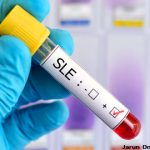For patients with lupus, family planning discussions are vital to achieving positive pregnancy outcomes & maintaining overall health…


For patients with lupus, family planning discussions are vital to achieving positive pregnancy outcomes & maintaining overall health…
Megan Brooks |
NEW YORK (Reuters Health)—Changes in atmospheric and environmental factors may contribute to organ-specific disease exacerbation in patients with systemic lupus erythematosus (SLE), according to a new study. The study found “strong associations between atmospheric variables and fine particulate matter concentration over the 10 days prior to a patient visit and organ-specific lupus flares at the…

The new EULAR/ACR classification criteria for SLE offer improved sensitivity and specificity, as well as more accurately reflect the current tests used to clinically diagnose SLE. A positive ANA test is obligatory…

As the 21st century unfolds, rheumatologists will most likely transition from prescribing lupus patients broad immunosuppressants to more targeted treatment approaches. But to make this happen and advance research, the challenges experienced in lupus clinical trial design must be addressed…

Recent research indicates that previous concerns about mortality associated with pregnancy in women with SLE may no longer be applicable. In the study, researchers found a significant decline in the in-hospital maternal mortality rate of women with SLE and a decrease in their length of non-delivery related hospitalization over the past two decades…

A recent gene expression analysis found an enriched downstream interferon signature, with predominantly IFNB1 signatures in systemic lupus erythematosus (SLE) patients. The study also found lower expression of all downstream interferon signatures in the kidneys of lupus nephritis patients…
Reuters Staff |
NEW YORK (Reuters Health)—Pregnancy outcomes in women with systemic lupus erythematosus (SLE) have improved markedly over the past two decades, although pregnancy risks remain higher than in women without lupus, according to a trends analysis. “Thirty years ago, most women with SLE were advised to avoid pregnancy because of high risks for maternal and fetal…

Recent research indicates that low-density neutrophils, such as low-density granulocytes, exert proinflammatory effects on the T cells of SLE patients. In the study, researchers confirmed SLE patients had a higher prevalence of low-density granulocytes than healthy controls and that these cells appeared to promote a Th1 response…

Research into lupus treatments suffered a setback after the failure of anifrolumab in clinical trials. However, during the 2019 ACR State-of-the-Art Clinical Symposium, Richard Furie, MD, outlined the possibilities of multiple new lupus therapies under investigation…

Results from a Phase 3 study showed ixekizumab significantly improved the signs and symptoms of non-radiographic axial spondyloarthritis in patients…